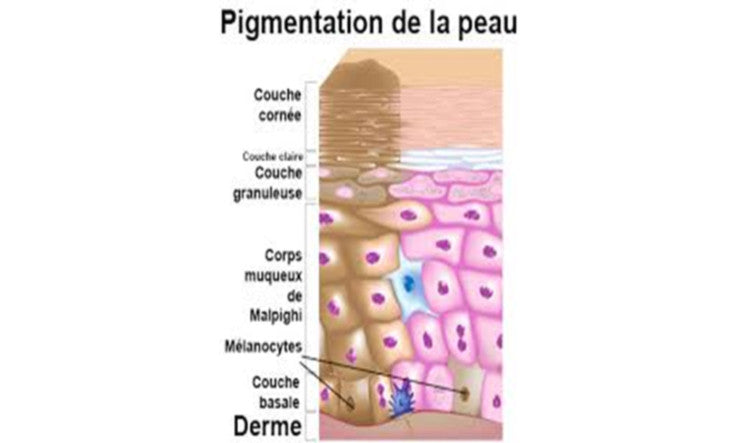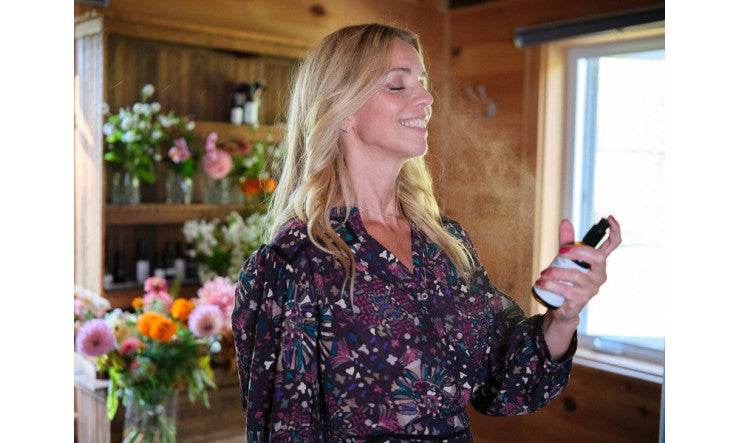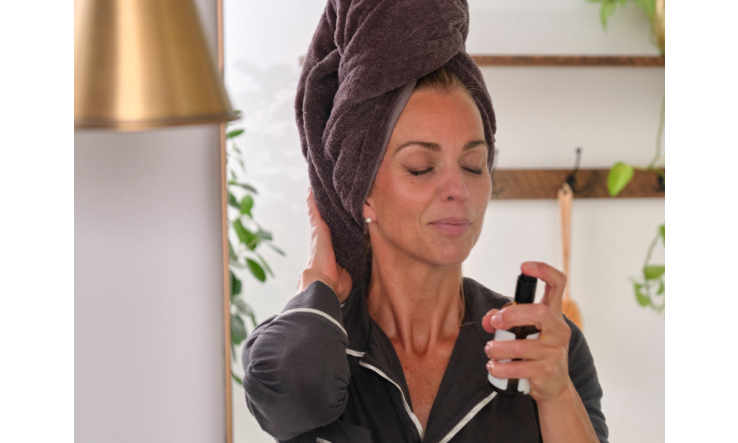What are spots?
These are localized skin discolorations of varying size that appear on sun-exposed areas of the skin, such as the face, hands, shoulders, or arms. They are linked to excess melanin production. Typically, these small, round spots appear in people over 40, after years of sun exposure. However, they can also sometimes appear in younger people due to intense or prolonged exposure.

Why do we get spots on our skin?
Brown spots are mainly caused by intense and repeated exposure to the sun, but also by a physiological reaction to an overly acidic system, thus causing senescence spots (age spots). Other hormonal, genetic or other factors can cause spots that can develop dermatological abnormalities. Monitoring is necessary. If they seem to evolve (increase in size, change in color, bleeding, enlargement, etc.), they must be treated by health professionals.
What is melanin?
Melanin is a pigment produced by skin cells, giving them their more or less dark coloration (from the Greek melanos = black). Its role is, among other things, to help the skin protect itself from ultraviolet rays from the sun. This pigment (melanocyte) is present in the basal layer of the epidermis, the upper layer of the skin.
Melanin comes from a very common amino acid in the body called tyrosine. This tyrosine is transformed into dopa and then dopamine thanks to an enzyme called tyrosinase.
Melanin is produced by melanocytes. These are cells located in the deep part of the epidermis, just in contact with the basement membrane on which the epidermis rests and which separates it from the dermis.
Melanocytes are cells that have tentacle-like extensions that extend up between the cells of the epidermis. Through these extensions, melanocytes provide the epidermal cells with melanin, protecting them from solar radiation. Skin cells have a limited lifespan, as it takes 28 days for the skin to renew itself. Aging cells eventually die and form a layer of keratin that gradually flakes off. This explains why the tan gradually disappears.
After years of exposure, melanin can concentrate in certain areas of the skin and pigment it more.
How to treat stains naturally?
It is at the level of regulation of tyrosinase activity that lightening products such as antioxidants intervene.
- Taking care of your skin daily
- Moisturize and protect your skin imperatively
- Hydrate regularly
Some interesting foods, such as potato, cucumber, lemon, vinegar, baking soda, onion have effective lightening properties.
MJ care protocols are put in place to help the skin accelerate its cellular regeneration thanks to exfoliants such as Exfopur which, through keratolytic action, rids the epidermis of dry brown patches and by the application of aroma lipid formulas which will act directly on the melanin cell.
Lightening treatments should always be applied in the evening to avoid compromising the goal. The sun is the determining factor and promotes the appearance of these unwanted effects. The skin will benefit most from the active ingredients overnight.
The Claripro formula:
Aromatic formula, rich in essential oils of carrot, celery, rose geranium, particularly recommended for spots for its lightening, healing properties, or even, in the case of celery, depigmenting. Mixed with rosehip oil (all MJ serums), enriched with rosemary oleoresin, sea buckthorn extract and tocopherol, works wonders.
Other elixirs, such as Myrrh (rich in antioxidants) or gold serum, are particularly effective in helping the skin regain or maintain its beautiful, even luminosity.
AHAs (fruit acids) also have lightening properties, through their desquamating and therefore regenerating actions.
Here is a protocol to follow for at least 1 month if you have small unwanted spots.
Morning :
- Surface cleaning with your cleaning oil
- Hydration with your favorite floral water
- Soak-in cleansing, to boost hydration and restore the hydrolipidic film, essential for good protection.
- Hydration with your favorite floral water
- Nutrition with an antioxidant serum. It's up to you to choose the one that suits you best ( rose serum , neroli serum , vetiver serum , pink jasmine serum , neutral serum , Myrrh Elixir , gold serum ) or simply Jojoba oil
- Protection with butter. Vanilla Shea is specially designed to protect skin from its environment. Other butters, such as Cocoa , are available for skin that is less sensitive to Shea. For delicate, delicate, porcelain skin, sun protection is essential year-round.
Evening :
- Surface cleaning with your cleaning oil
- Hydration with your favorite floral water
- Soak-in cleansing, to boost hydration and restore the hydrolipidic film, essential for good communication
- Localized exfoliation:
- With Exfopur, using microepidermabrasion technique. You can add 1 drop of the Claripro formula with your Exfopur
- With the fruit mask (apple or grape), on the area. You can add 1 drop of the Claripro formula to your mask
- With the Exfopro formula, at the rate of one drop in a little baking soda and applied very precisely and locally on the stain (we are talking about coloring without dermatological abnormality)
- Brightening mask:
- With a gel, in the case of seborrheic-prone skin, mix 1 drop of the Claripro formula with a teaspoon of Aloe gel and 1 drop of jojoba oil. Apply to the entire face and massage until completely absorbed after a few minutes of rest (enough to soak the colored areas well). Finish your treatment by spraying your floral water and your finishing serum
- With honey , for all skin types! Honey combined with the Claripro formula works wonders. You can apply pure honey every day to stimulate cell regeneration and, every two or three times, add 1 drop of the Claripro formula. As a mask, it rinses off with water.
- With Exfopur, if you want to perform immediately and after performing your microepidermabrasion technique, perform your imbibitive cleansing before applying a new layer, this time mixed with a few drops of your serum and 1 to 3 drops of your Claripro formula. As a mask for 12 to 20 minutes. You rinse, moisturize (floral water, gel) and apply a suitable finishing serum.
- B. Your skin is talking to you. Listen to it.
If it tingles, heats up, reddens or dries, adapt your protocol according to its sensitivity.


































































Leave a comment